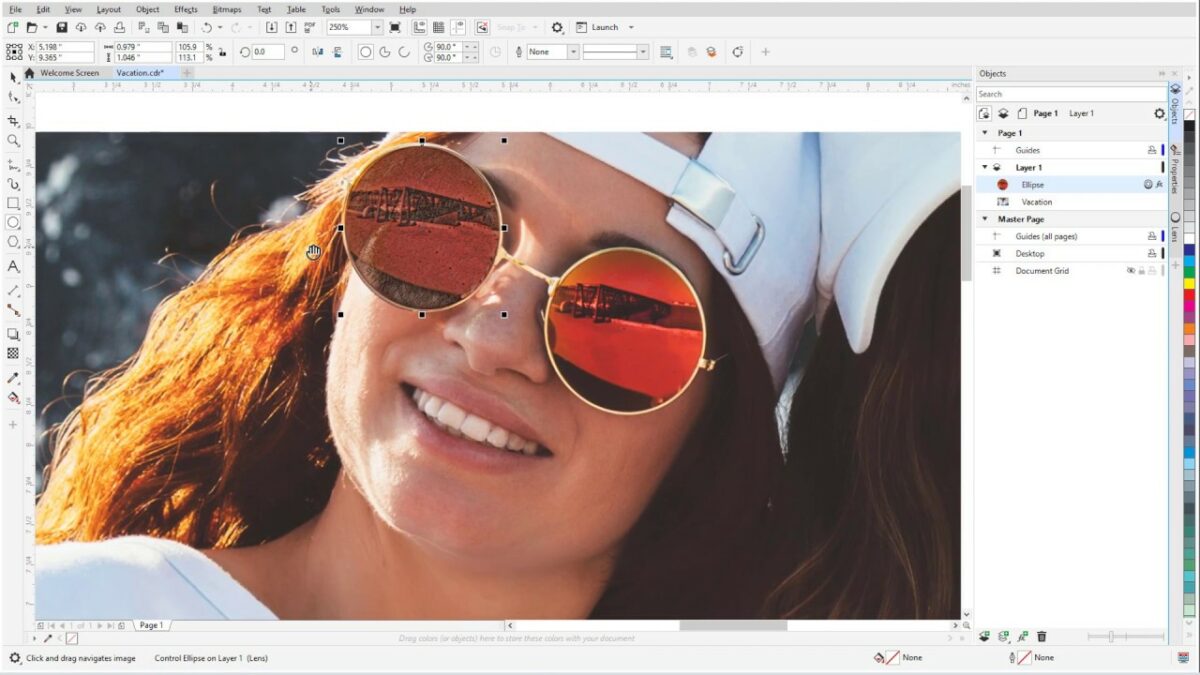Introduction:
CorelDRAW stands as a powerhouse in the realm of graphic design, offering a vast array of tools and features to bring creativity to life. Among its arsenal are bitmap effects, which serve as dynamic tools to enhance visual appeal, add depth, and evoke emotions in designs. In this comprehensive guide, we’ll embark on a journey to explore the intricate world of bitmap effects in CorelDRAW, uncovering techniques, best practices, and creative strategies to unlock the full potential of graphic design.
Understanding the Significance of Bitmap Effects:
Bitmap effects are transformative tools that breathe life into digital artwork, allowing designers to apply various visual enhancements with precision and creativity. These effects can range from subtle adjustments like blurs and shadows to dramatic transformations like distortions and artistic renderings. By leveraging bitmap effects, designers can elevate their designs, captivate their audience, and convey their message with impact and flair.
Key Concepts of Bitmap Effects in CorelDRAW:
Before delving into specific bitmap effects and techniques, let’s establish some key concepts:
- Versatility:
- Bitmap effects in CorelDRAW are versatile, capable of enhancing various elements of artwork, including images, shapes, text, and objects.
- They can be applied selectively or universally, depending on the desired effect and design objective.
- Non-Destructive Editing:
- Bitmap effects are non-destructive, meaning they can be applied and adjusted without permanently altering the original artwork.
- Designers can experiment freely with different effects and settings, knowing they can easily revert or modify their changes.
- Performance Considerations:
- While bitmap effects can enhance visual appeal, they can also impact performance, especially on complex or large-scale designs.
- Designers should use bitmap effects judiciously, optimizing their settings to balance visual impact with performance considerations.
Exploring Bitmap Effects Techniques:
Now, let’s delve into some techniques for applying and manipulating bitmap effects in CorelDRAW:
- Applying Basic Effects:
- Start by selecting the object or artwork to which you want to apply a bitmap effect.
- Navigate to the Effects menu or the Bitmap Effects docker to access a variety of preset effects, such as blur, sharpen, noise, and more.
- Experiment with different effects and settings to achieve the desired visual enhancement.
- Creating Custom Effects:
- For more advanced customization, use the Interactive Bitmap Effects Tool to create custom effects.
- Select the Interactive Bitmap Effects Tool from the Toolbox and click on the object to apply the effect.
- Use the interactive controls to adjust parameters such as intensity, direction, size, and shape of the effect.
- Combining Effects:
- Combine multiple bitmap effects to create complex and dynamic visual enhancements.
- Experiment with layering effects, adjusting their order and opacity to achieve the desired result.
- Be mindful of how different effects interact with each other and how they contribute to the overall aesthetic of the design.
- Masking and Clipping:
- Use masking and clipping techniques to apply bitmap effects selectively to specific areas of the artwork.
- Create a mask or clipping path to define the areas where the effect should be applied, preserving other areas of the artwork.
Advanced Tips and Best Practices:
In addition to specific techniques, consider the following tips and best practices for working with bitmap effects in CorelDRAW:
- Use High-Quality Images:
- Start with high-resolution images to ensure optimal results when applying bitmap effects.
- Low-resolution images may appear pixelated or distorted when certain effects are applied.
- Experiment and Iterate:
- Don’t be afraid to experiment with different effects, settings, and combinations to achieve the desired visual impact.
- Iterate on your designs, refining and adjusting bitmap effects until you achieve the perfect balance of style and sophistication.
- Consider Output and Compatibility:
- Keep in mind the intended output format and compatibility requirements when using bitmap effects.
- Certain effects may not translate well to different media or may require specific settings for optimal results.
Conclusion:
Bitmap effects in CorelDRAW are indispensable tools for enhancing digital artwork with stunning visual enhancements. By understanding the key concepts, exploring techniques, and following best practices outlined in this guide, designers can unlock the full potential of bitmap effects and elevate their graphic design projects to new heights. Whether creating illustrations, advertisements, presentations, or digital artwork, bitmap effects empower designers to unleash their creativity, captivate their audience, and leave a lasting impression with their designs. So, dive in, experiment with different effects, and transform your artwork into breathtaking masterpieces with bitmap effects in CorelDRAW.


